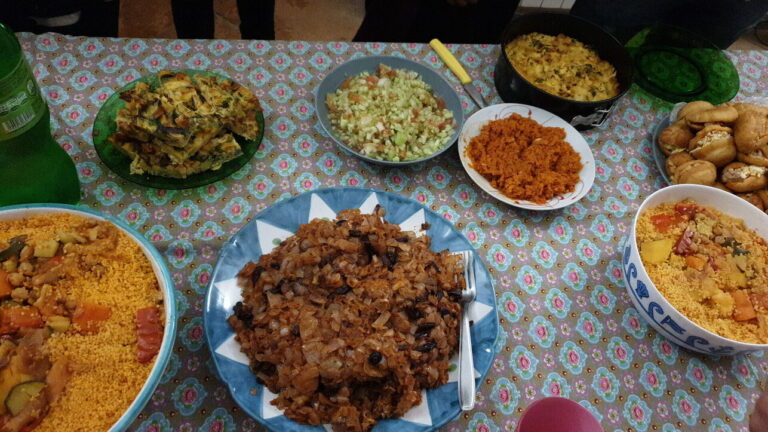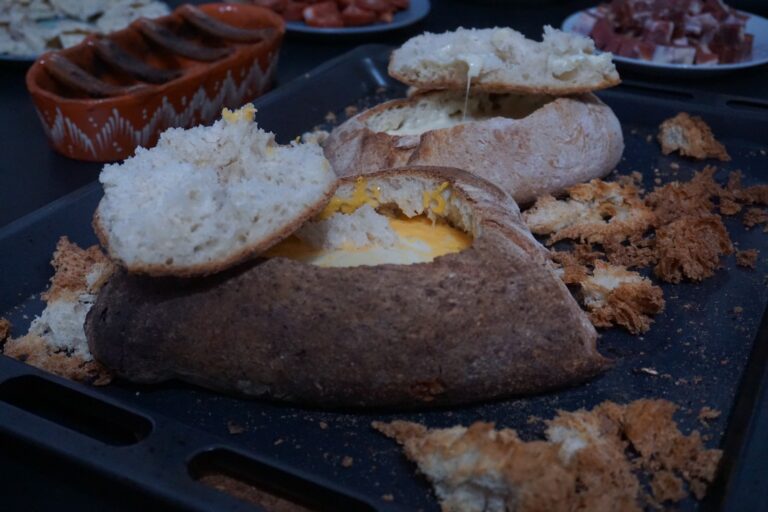Updated on July 3, 2024
Looking for volunteers for the 11th edition of Project M.A.R.E.

Thanks to a strategic partnership with the Italian National Agency, the Marine Protected Area (MPA) of Punta Campanella is offering the opportunity to 5 ocean enthusiasts from all over Europe and partner countries to take part in Project M.A.R.E. 2024, a mid-term European Solidarity Corps (ESC) which will take place from May 2024 to December 2024. Successful participants will find themselves inside the Project M.A.R.E. family, a community of close to 100 ex-volunteers and sympathizers from 15 different countries who all share a deep-found relationship with the sea.
Background Info
Project M.A.R.E. represents a unique volunteering experience in collaboration with the MPA of Punta Campanella to support marine conservation initiatives which aim to reduce human impacts on the marine natural resources within the region. Volunteers will work to spread awareness about the richness of marine ecosystems, to promote ecotourism, to stop anchoring and pollution, to clean up beaches and the sea, working side by side with operators of the MPA and many local organizations which work to achieve similar goals.
During the last eleven years of activities (from 2013 until today) volunteers have participated to many local initiatives, international meetings and conferences, and they have achieved many results in terms of support to the MPA and personal development. This life-changing experience provides a powerful way to make people understand the interactions between humans and ecological systems, helping them to understand the direction to take in their lives.
Site Info
Punta Campanella MPA is located around the Sorrento peninsula, between the Gulf of Naples, the island of Capri and the Amalfi coast and it contains one of the most biodiverse sites within this basin. This territory is made of “mountains that fall into the sea enchanted by the song of sirens”. Due to its location that is difficult to access by land, as well as its transparent water, the Sorrento peninsula became a preferred destination for luxury and mass tourism. In this context, the MPA aims to protect natural places, like Ieranto bay, which are high interest sites for the biodiversity as well as for their cultural and historical value. In those places can be found traces of ancient civilisation that makes them even more fascinating and mysterious.
The continuous human exploitation of coastal areas has led to a need for marine conservation and therefore the MPA was created. Due to the difficult access by land and the transparent waters, this area is the perfect place for boats and yachts to stop and anchor during holiday periods. This leads to a big threat for marine life, especially Posidonia oceanica meadows and hard substrate communities made of encrusting sponges and algae, the so-called coralligenous assemblages.
Since its foundation in 1997, the MPA is carrying out many summer initiatives to reduce the impact of mass tourism (between June and September) and to let people enjoy the Park in a sustainable way. Monitoring, ecotourism and conservation are the keywords to have a balanced usage of marine resources and volunteers play an important role in carrying out these operations.
The work of the MPA Punta Campanella doesn’t stop at the borders of the effective marine protected area, but goes far beyonds, wherever it is needed, through collaboration with several organizations and entities involved in marine conservation and education. For instance, since 2006, the park of Punta Campanella is actively working on a marine turtle conservation program in collaboration with the Antorn Dhorn Zoological Center, but also creating strong relashionship with fishermen and other actors of the sea. Thanks to these collaborations, the park of Punta Campanella started taking part in a summer program of sea turtle nest monitoring in 2020.
This year, the MPA of Punta Campanella is looking for volunteers to take part in project !
1. Project MARE – MPA Punta Campanella
Who?
4 volunteers
Where ?
Massa Lubrense, 80061, Napoli (MPA Punta Campanella) (Hosted in Nerano)
When?
10th May – 30th November (the project is started, yet the team of volunteers is not complete)
Doing what ?
Supporting the MPA in a lot of different activities (monitoring of natural sites, guided visits, scientific studies, educational activities outdoor and indoor)
1. Project M.A.R.E. – MPA Punta Campanella – Position offered
the project is meant to host 4 volunteers that will commit themselves to the project for a duration of 7 months (May to December 2024 (**)) and that will work at different levels of organisation:
- The project team consisting of the group of volunteers from different nationalities and backgrounds and the coordinator.
- Team of the MPA of Punta Campanella made of biologists, educators, mariners, divers, park guards.
- Local organisations (environmental organizations, diving centres, charter companies, other parks, etc.) that work to achieve the same goals.
Volunteers should be open-minded, curious and tolerant with a positive attitude and willingness to learn. We would like to host people with a particular interest and love for nature, the ocean, marine conservation, environmental education and outdoor activities to share this once-in-a-lifetime experience set in a multi-cultural context.
Duties and tasks
The MPA works on the activities that are listed below. According to the period of the year, volunteers will be involved in one or more of them. They will be expected to actively take part in these initiatives with a positive attitude using both the English and Italian language.
Marine Conservation – to mitigate human impacts on marine natural resources by reducing illegal activities and making people aware of the MPA and its goals.
Environmental Monitoring – to collect information about abiotic, biotic and human factors in the MPA and its surroundings.
Info & Awareness – to educate people about the park’s rules and threats to marine resources.
Outdoor Adventures – to meet nature face to face and enjoy its power and energy.
Beach and Sea Clean-ups – to try and mitigate one of the biggest human impacts on the marine environment: pollution.
Cultural Exchange – to learn about different cultures, tolerance and diversity.
Ecotourism Promotion – to spread info and open the doors to eco-compatible interactions between humans and nature.
Environmental Education – to participate in raising awareness of younger (or not) generation through educational activities
Schedule
Volunteers will support the park initiatives with a 30 to 40 hours/week commitment (6-8h/day). They will enjoy 2 weekly free days (not necessarily during weekend days). They will also enjoy 2 monthly free days to travel across this wonderful country or just to relax, which they can save up and choose themselves. The work will be done at the office and in the field (± 50/50 depending on the time of the year).
The schedule is more or less as follows (**):
| Description | Timing | ||
| TRAINING and ORIENTEERING |
|
May – June | |
| INTO THE BLUE |
|
June-September | |
| MATURATION |
|
October-November | |
What We Offer
The project is a part of the ESC programme and is financed by the Italian National Agency. Thanks to these funds we can cover these expenses for volunteers:
Round trip – arrival and return to and from the Sorrento Peninsula at the beginning and end of the project;
Accommodation – shared accommodation and rooms with other volunteers;
Food Expenses – an amount of 150€ per month is guaranteed to each volunteer to cover food expenses (possibly in the form of coupons);
Pocket Money – an amount of 150€ per month is guaranteed to each volunteer for extra expenses;
Training – several training sessions, including weekly Italian classes, will be provided to volunteers in order to give them the best tools to support our work;
Orienteering – the first step of the project is to integrate in the local community, to orient yourselves in your new place and to understand the geography of the territory and the province of Naples in order to feel at home;
Mentoring – volunteers will take part in weekly meetings with the mentors and the coordinator to analyse and reflect on the training process, the progression of activities and the possible problems that might be faced during the project.
If this opportunity sounds interesting to you, do not hesitate and apply to join Project M.A.R.E. 2024!
(*) Dates are susceptible to change.
Check out our Instagram and blog to better understand who we are!
HOW TO APPLY: send a mail to mareapplication@gmail.com with :
- Curriculum Vitae
- Motivation video of 1 minute through WeTransfer in which you briefly explain who you are and why you believe to be the right person for Project M.A.R.E. 2024.
- Finally, due to the short period covered by the project, the MPA won’t be able to offer italian classes as intensives as it did the previous years. However, the work will require a high level of interaction with locals, and thus a capacity to understand and/or learn italian fast. So, we ask all the candidates to specify their italian level, knowing that it will be an important (but non exclusive) criteria for us. Successful applicants will be invited for an on-line interview to do as soon as possible.
If you want further informations, contact us with your questions at mareapplication@gmail.com.


 its repartition throughout the world as well as the numerous infrastructure needed for it to reach, drinkable, our home ! The students had the opportunity to learn a lot about this topic, first going from their own representations of water.We talked about the unfairness of water distribution throughout the world, and talked about all the people that, still today, don’t have access to healthy water. Talking through problems, imagining solutions, we managed to learn a lot and keep smiling, as there is always something we can do to make things better
its repartition throughout the world as well as the numerous infrastructure needed for it to reach, drinkable, our home ! The students had the opportunity to learn a lot about this topic, first going from their own representations of water.We talked about the unfairness of water distribution throughout the world, and talked about all the people that, still today, don’t have access to healthy water. Talking through problems, imagining solutions, we managed to learn a lot and keep smiling, as there is always something we can do to make things better For example, we took the time to take a look at various recipes and to calculate the amount of kilometers the ingredient took to reach our plates… And sometimes, the answer was frightening ! This allowed us to grow more conscious of our eating habits. We also talked about the advantages of choosing local products, sold by small producers, instead of products sold in the supermarket. Overall, we had a great lesson about the repartition of the richness along the food production chain.
For example, we took the time to take a look at various recipes and to calculate the amount of kilometers the ingredient took to reach our plates… And sometimes, the answer was frightening ! This allowed us to grow more conscious of our eating habits. We also talked about the advantages of choosing local products, sold by small producers, instead of products sold in the supermarket. Overall, we had a great lesson about the repartition of the richness along the food production chain. That is what we wished to transmit to our students through module 8. In order to do so, we thought together about the meaning of activism and its importance, and then we put our thought in practice : the students organized a manifestation, created posters and a communication campaign, and were brought to think about the problems that are dear to them. It has been a very interesting moment.
That is what we wished to transmit to our students through module 8. In order to do so, we thought together about the meaning of activism and its importance, and then we put our thought in practice : the students organized a manifestation, created posters and a communication campaign, and were brought to think about the problems that are dear to them. It has been a very interesting moment.



 During this day, we went through 5 activities that allowed us to introduce the whole manual. Indeed, the students starting learning about ecology, but also about a lot of other words and concepts connected to it and to environmental themes. Through a couple of concrete exercises, they managed to hone their collaborative skills as well as their analytic skills, and they learned what is the good attitude to adopt when one wants to study environmental problems ! In other words, at the end of the day, they were all more eco-literates. And even though doing all the activities has been very tiring (for the students as well as for our facilitators), we all finished this first day of testing with a smile on our face and with the satisfaction of the accomplished work.
During this day, we went through 5 activities that allowed us to introduce the whole manual. Indeed, the students starting learning about ecology, but also about a lot of other words and concepts connected to it and to environmental themes. Through a couple of concrete exercises, they managed to hone their collaborative skills as well as their analytic skills, and they learned what is the good attitude to adopt when one wants to study environmental problems ! In other words, at the end of the day, they were all more eco-literates. And even though doing all the activities has been very tiring (for the students as well as for our facilitators), we all finished this first day of testing with a smile on our face and with the satisfaction of the accomplished work.
 The objectives of this second module was to teach to the students how the organisms are organized in the natural world, and how everyone of them is connected to the others through different kinds of relationship. The students have been particularly pro-active for this module, and went through the activities with a lot of energy. They went from questioning themself to building an ecosystem, while studying the relation between different kind of animals animals and between animals and their environment, as well as the influence of human being on natural ecosystem. At the end of the module, we took the time to talk a little bit about the services that the ecosystems are providing to humans, and about the impact that the humans have on the ecosystems. This last topic was a good way for us to close the day, as it allowed us to smoothly introduce the module 3.
The objectives of this second module was to teach to the students how the organisms are organized in the natural world, and how everyone of them is connected to the others through different kinds of relationship. The students have been particularly pro-active for this module, and went through the activities with a lot of energy. They went from questioning themself to building an ecosystem, while studying the relation between different kind of animals animals and between animals and their environment, as well as the influence of human being on natural ecosystem. At the end of the module, we took the time to talk a little bit about the services that the ecosystems are providing to humans, and about the impact that the humans have on the ecosystems. This last topic was a good way for us to close the day, as it allowed us to smoothly introduce the module 3. Thus, after seeing, in module 2, how animals and plants were interacting with each other and their environment in the natural world, we studied how those organisms were heavily impacted by human activities. Through the activities of the third module, we went through the main threats impacting the ecosystems, their causes and consequences. The students have had the opportunity to get in the shoes of the impacted organisms, but also to think about solutions that they could implement on a local level to mitigate the impacts we have on nature !
Thus, after seeing, in module 2, how animals and plants were interacting with each other and their environment in the natural world, we studied how those organisms were heavily impacted by human activities. Through the activities of the third module, we went through the main threats impacting the ecosystems, their causes and consequences. The students have had the opportunity to get in the shoes of the impacted organisms, but also to think about solutions that they could implement on a local level to mitigate the impacts we have on nature !

































